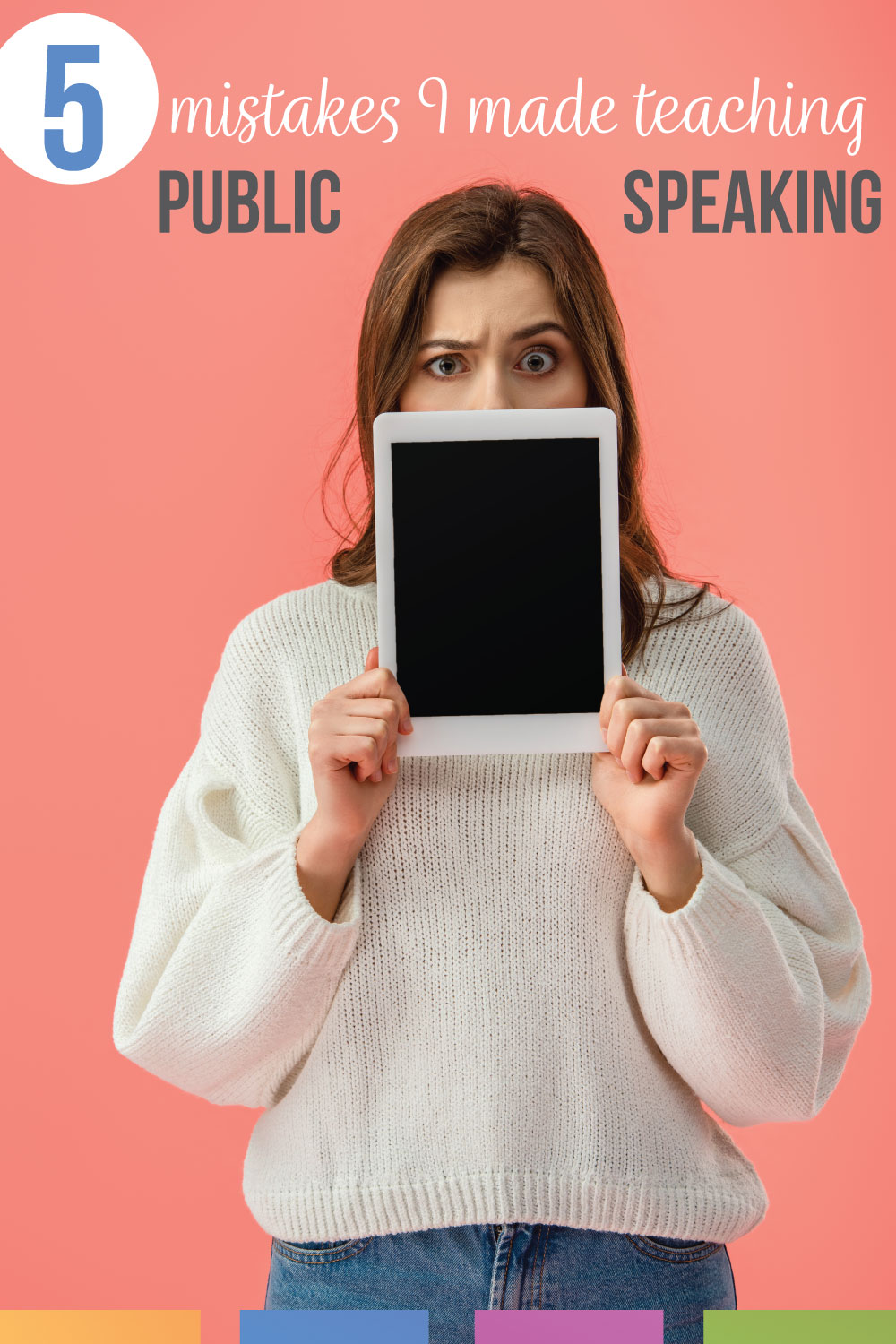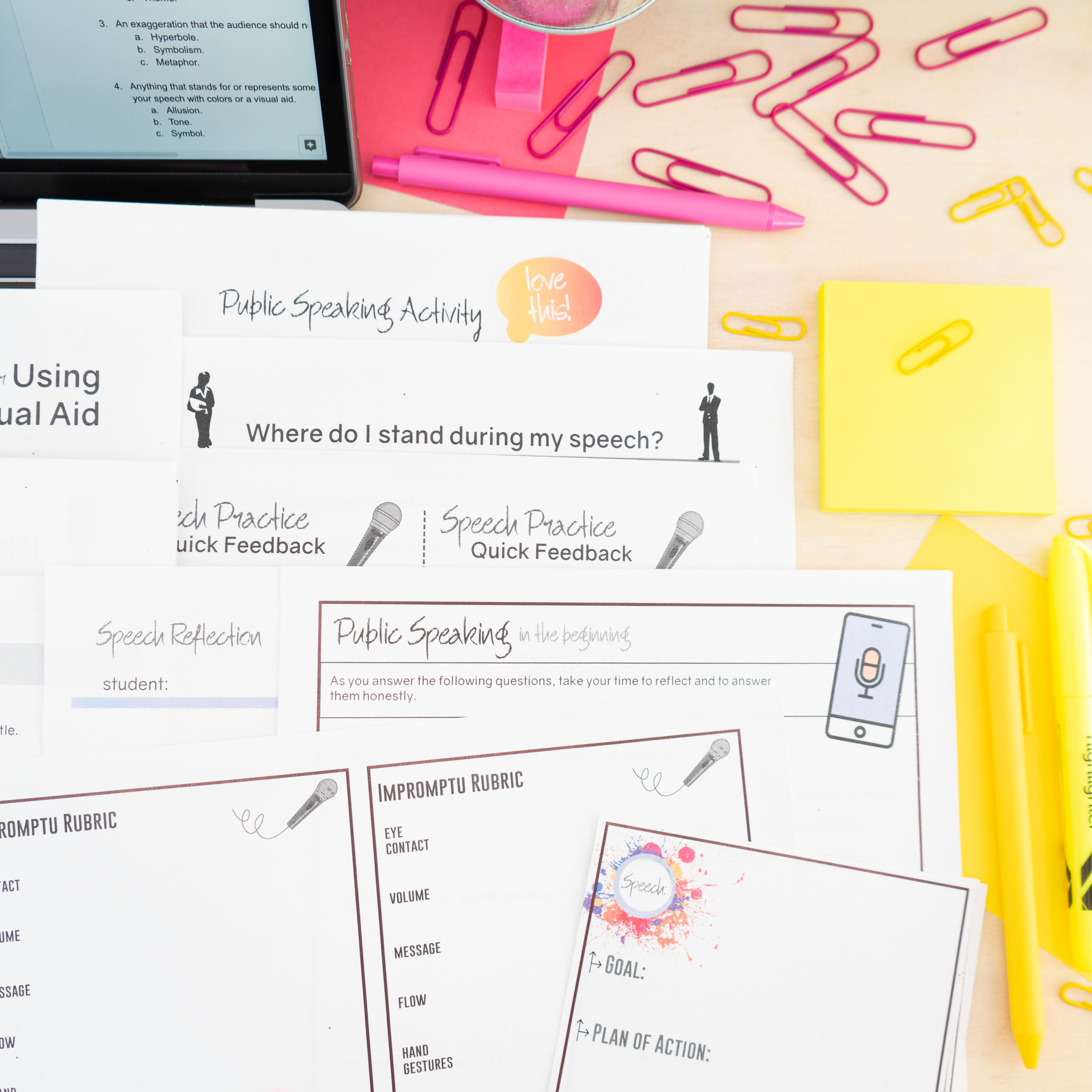Becoming a public speaking teacher is a huge responsibility. It’s rewarding, and your lessons are vitally important for the future professionals of the world.
Still, speech is a touch subject to teach. Students can be intimidated, reluctant to give speeches, and underestimate the need for practice. Preparing a speech encompasses research, organization, and a grasp of language—all before actually delivering the speech.
Teaching public speaking high school for the first few times proved difficult. Looking back now, I have revamped the way I teach speech. Reflecting even more, five big mistakes come to light.

I’m embarrassing myself today so a new public speaking teacher won’t tomorrow. As a public speaking teacher, I made these mistakes.
1. Assigning interviews.
File this under “new teacher not thinking this all the way through.” I’ll still mention this failure though. I asked students to interview each other for three minutes. My goal was for them to banter back and forth, find out interesting facts about each other, and practice a bit of impromptu speaking.
You see where this is going.
Not all of the groups completely finished the interviews because I had to stop them. Some of the material bordered on inappropriate.
What should I have done? Given more guidelines for one. Secondly, I should have taught a lesson on keeping topics appropriate and steering the interviewee back to the topic at hand. As a new public speaking teacher, I didn’t realize that I needed to provide guidelines and examples.
2. Not showing samples.
Public speaking students need examples, both visual and written. When I began showing students speech competitions, their speeches improved. I could show students examples of people their age succeeding. I could pause the video and emphasize tone, hand gestures, and movements.
My students write outlines, which allows them to add and subtract as they practice. Again, once I created examples of outlines, students’ outlines became more functional.
Students who are unfamiliar with speaking to an audience benefit from examples. As a public speaking teacher, I should have provided authentic examples.
3. Not providing enough guidance for speech topics.
I’ve written about speech topics before, but it’s important enough to mention again. If students have a weak topic, or too broad of a topic, they will flounder. Weak, and they scramble for information. Broad, and they will struggle to narrow the information. Set students up to succeed.
Also? Sometimes I have students who want to complete a speech on ways to stop inflation. I gently explain that if they have the answers for such complex problems, they should make money at a think tank or in Washington.
Normally after discussion, they discover they really want to persuade classmates to find an interest in such topics. Again, cover speech topics with students. My first year, I wanted students to take ownership of their topics. That can still happen with guidance from a teacher.
4. Starting too big.
Nothing like starting a speech class with a long researched speech. Seniors: research – writing – creativity… they’ve done all of that, right? Right, but combining it into a speech is another tale. I started these poor kids with too big of a bang.
A small speech would have worked better than a large one. I believe I made the length requirement was not as long at the end, but the rest put too much on these students. I started them with too big of a bang.
Now I start with 30- second mini speeches, a few impromptu, and a few tone exercises. We work up to the larger speeches.
5. Not sharing enough empathy as a teacher.
Public speaking wrecks some people. I’ve adjusted over time, but I would not call myself a natural speaker. I should have told my students that. Students think teachers judge them (we are grading them!), and this adds to their anxiety.
Honestly, I have all the empathy in the world for nervous students. It helps if you tell students that, if you are real with them, if you explain the goofs you’ve made. They will respect you and will appreciate your understanding. Tell them they’re not alone.
Some of these issues could have been first time teacher errors, or youthful mistakes. Still, I hope that my reflections help a teacher.
Examples and patience help when teaching public speaking. Remember that once students say something, it cannot be retrieved. Students writing a paper and students giving a speech are different—it opens the potential for problems. Clearly state (and put in writing!) what is acceptable for speeches, what is not, and the results of stepping over the line.
I adore teaching public speaking because students grow throughout the entire course, and those skills are important for their futures. As I reflect on my rookie mistakes, I see what I should have done. I hope these help if you are setting up a public speaking course.
Update: After years of teaching pubic speaking, I created the ultimate public speaking bundle. It includes activities, tips, and tricks to create a fulfilling speech unit for students.
Do you want public speaking activities, delivered right to your inbox? Sign up below, and I’ll send you six public speaking lessons for free.



